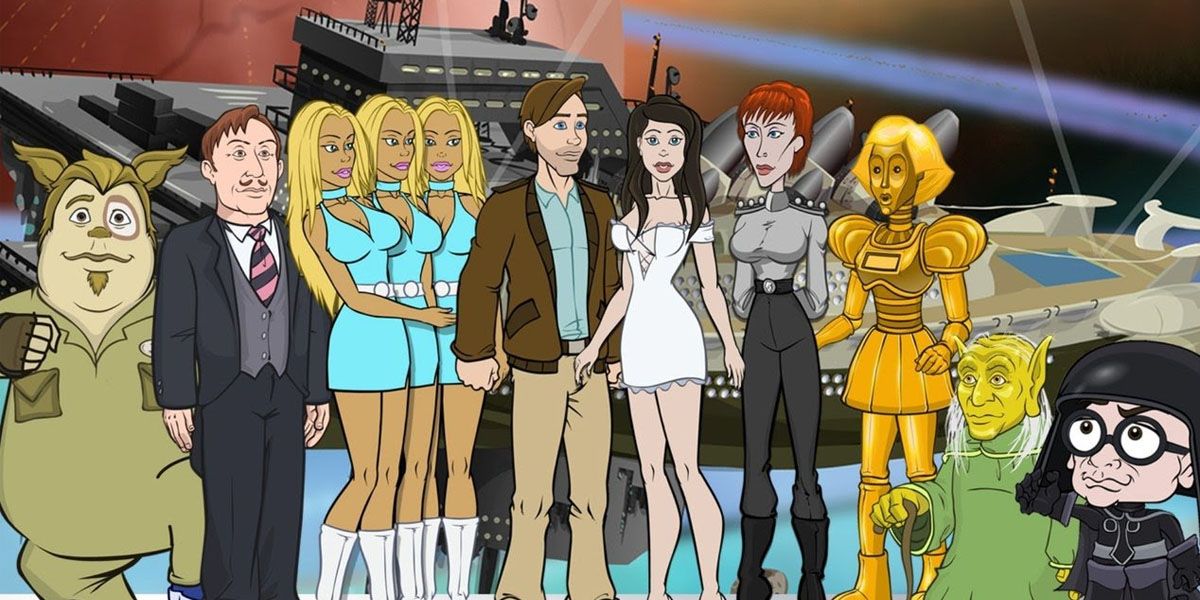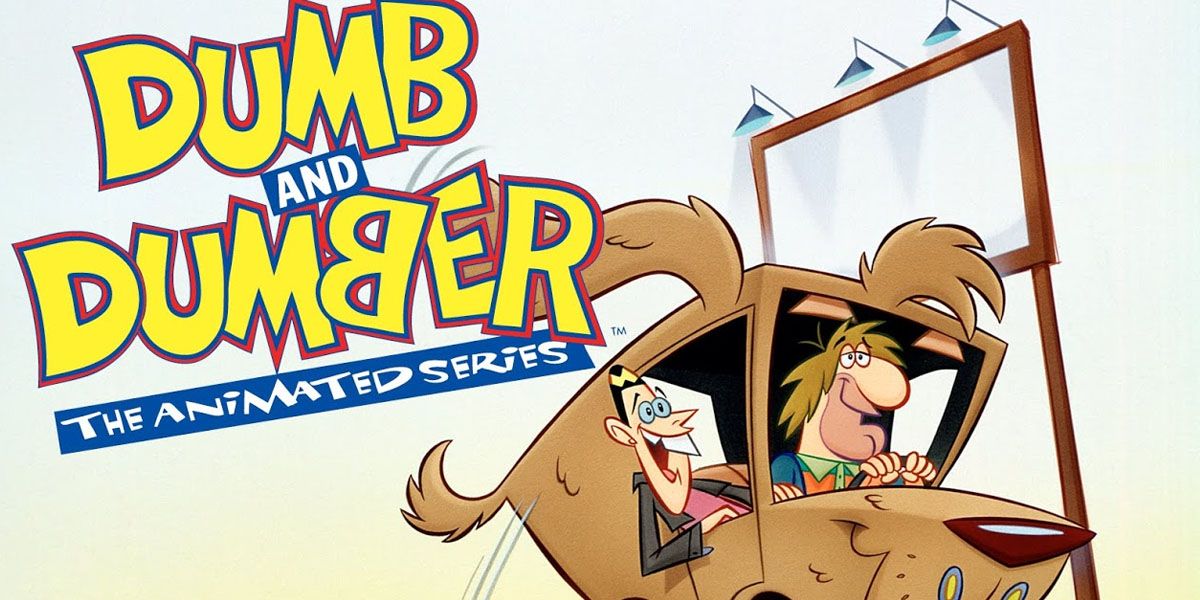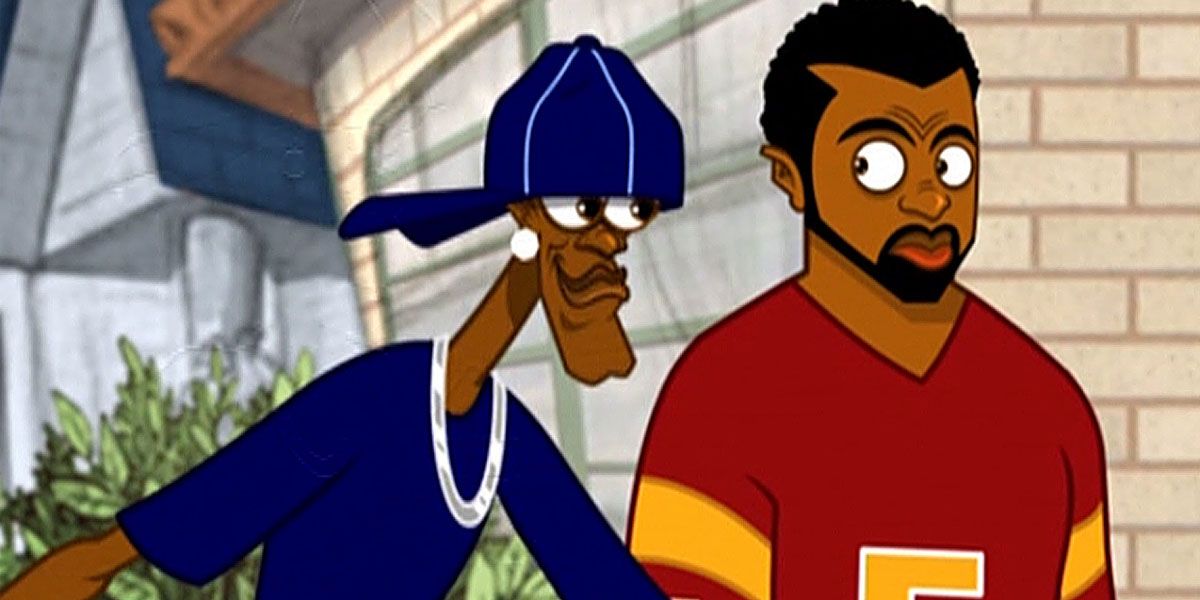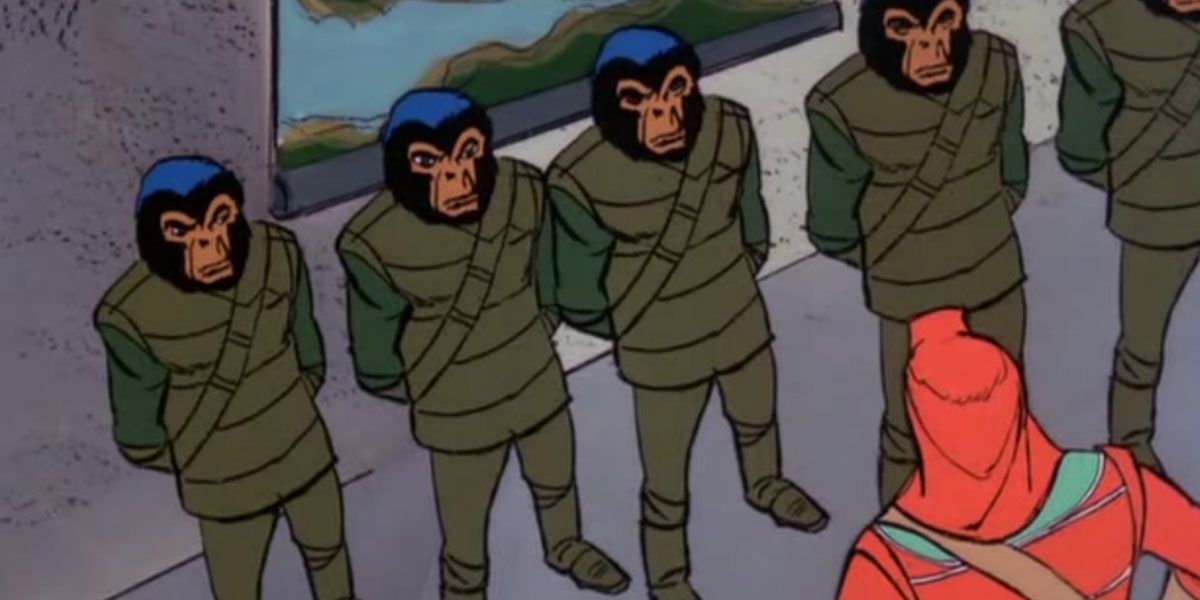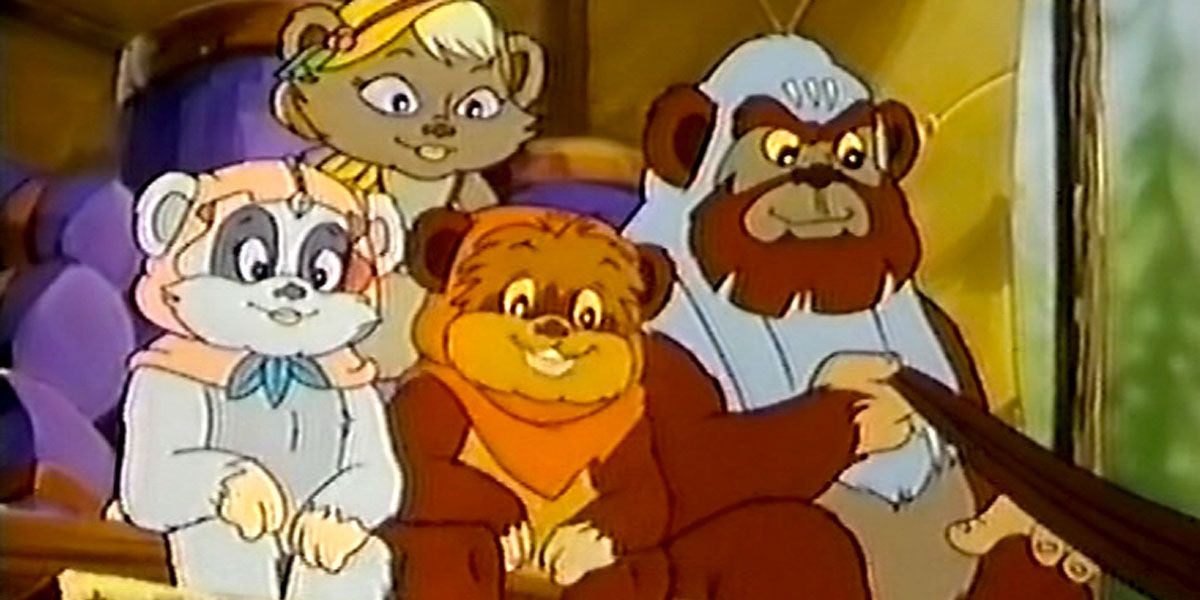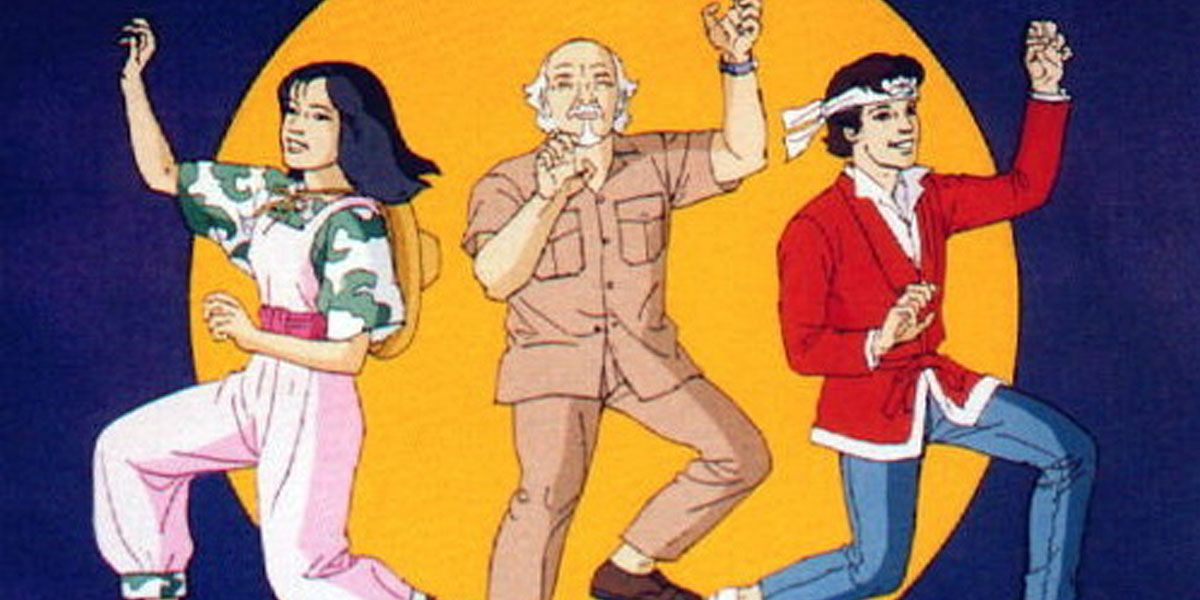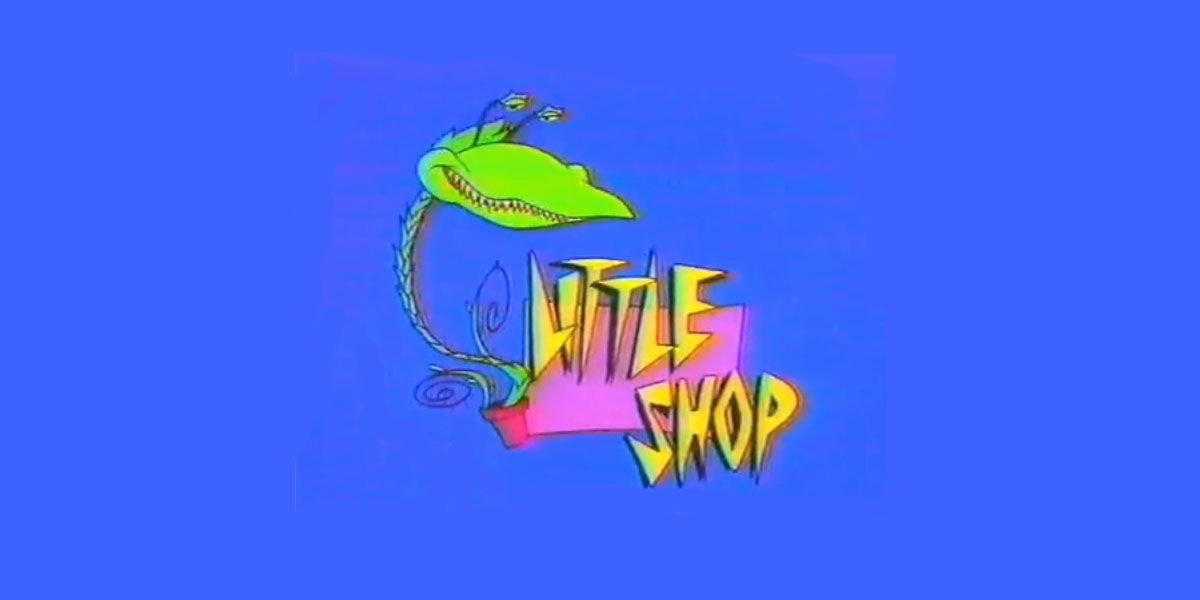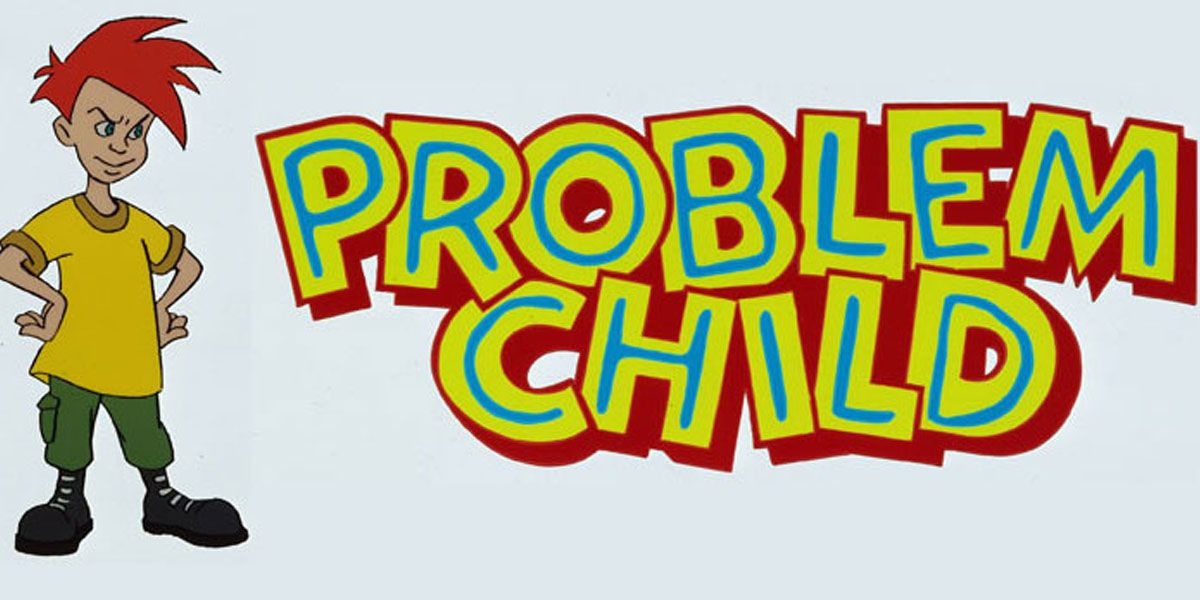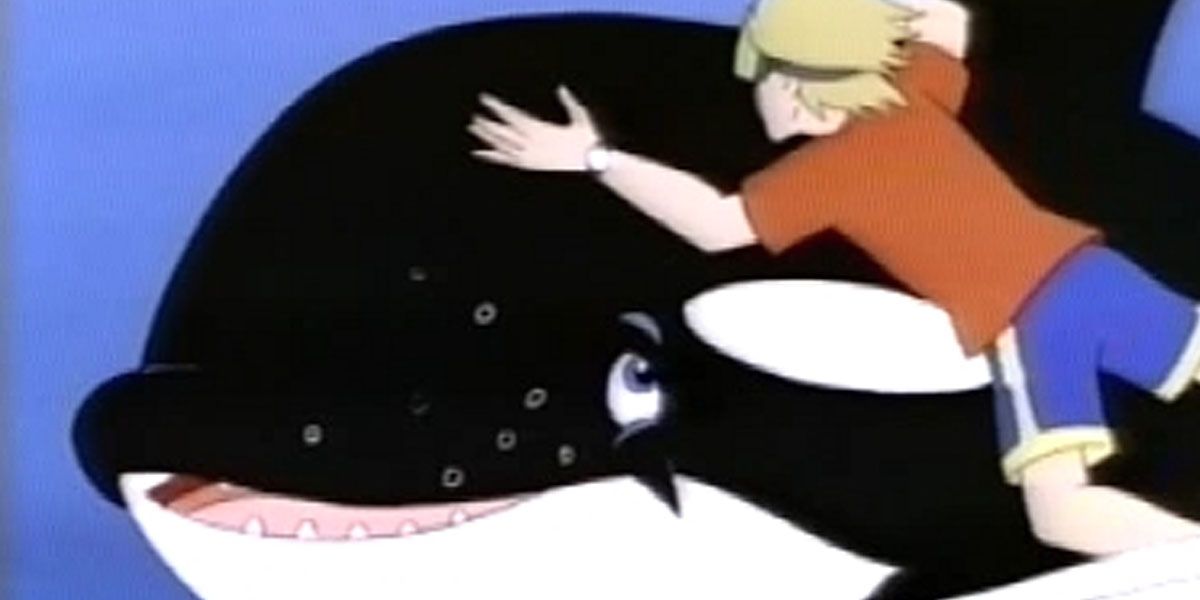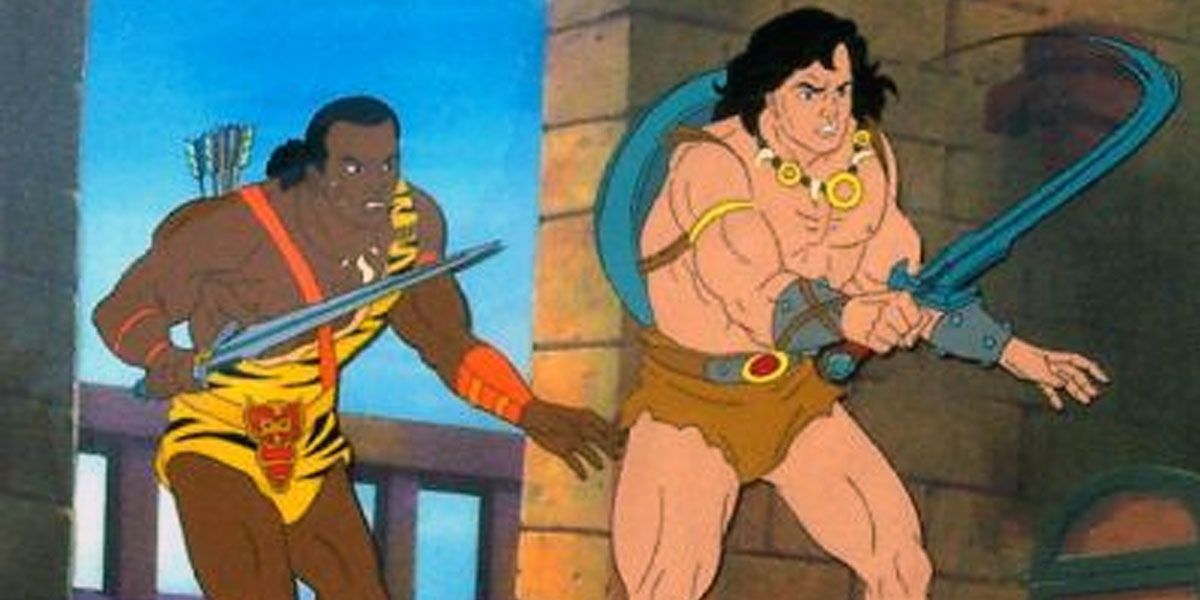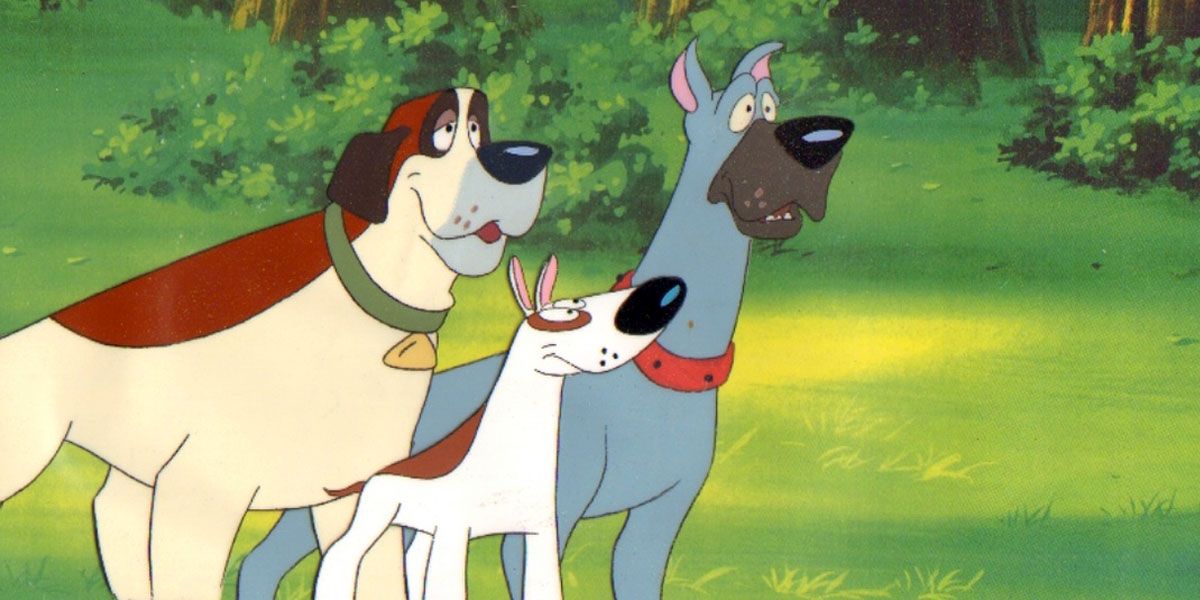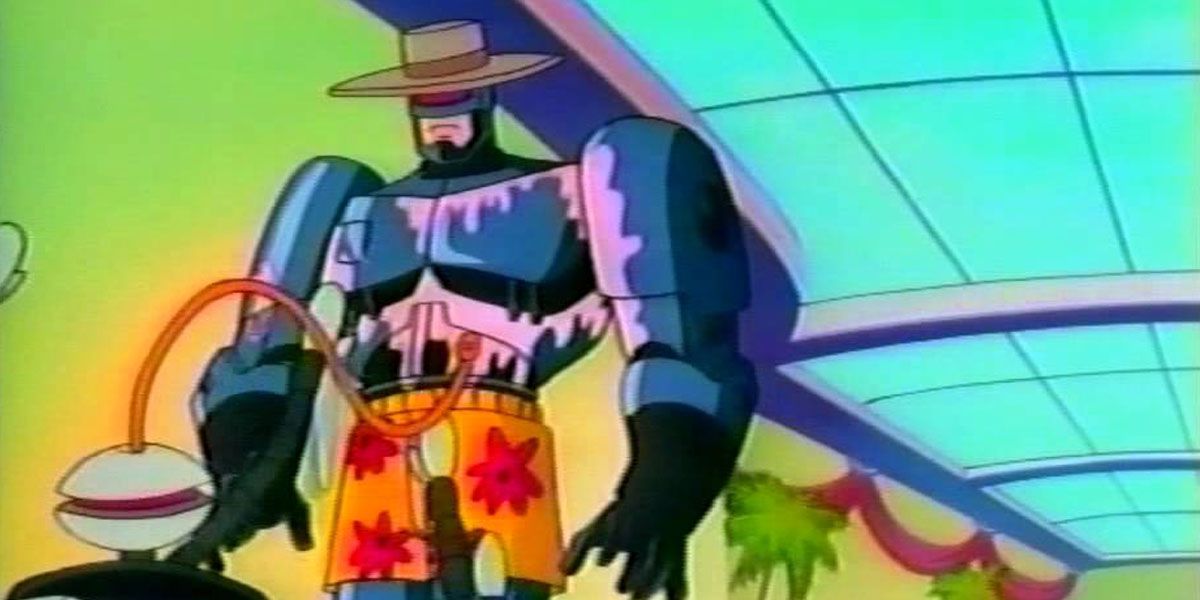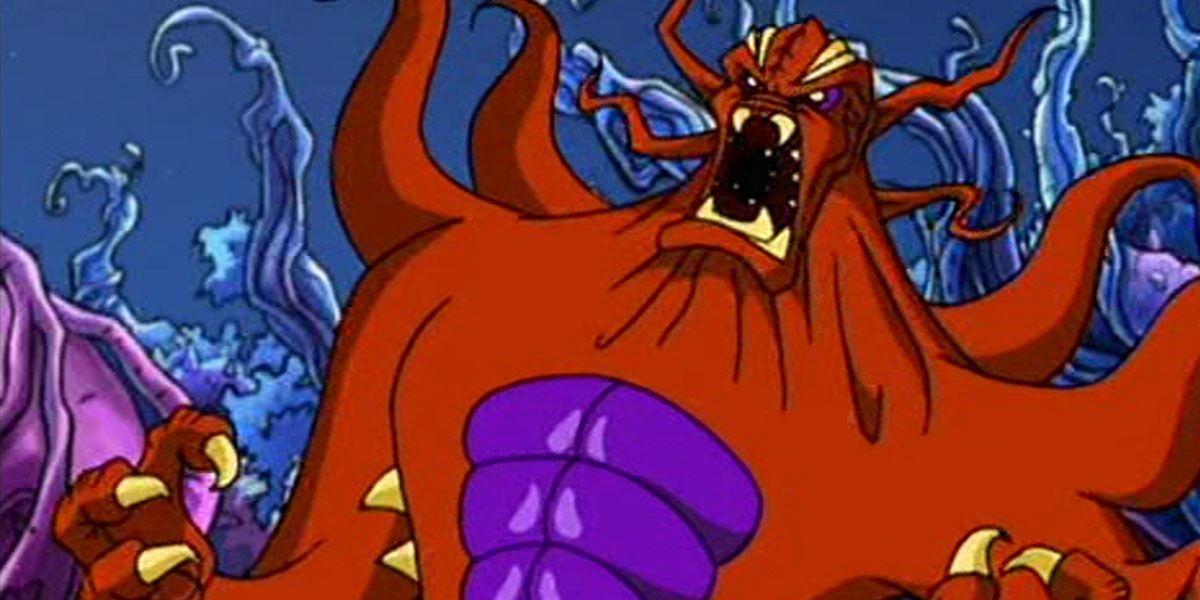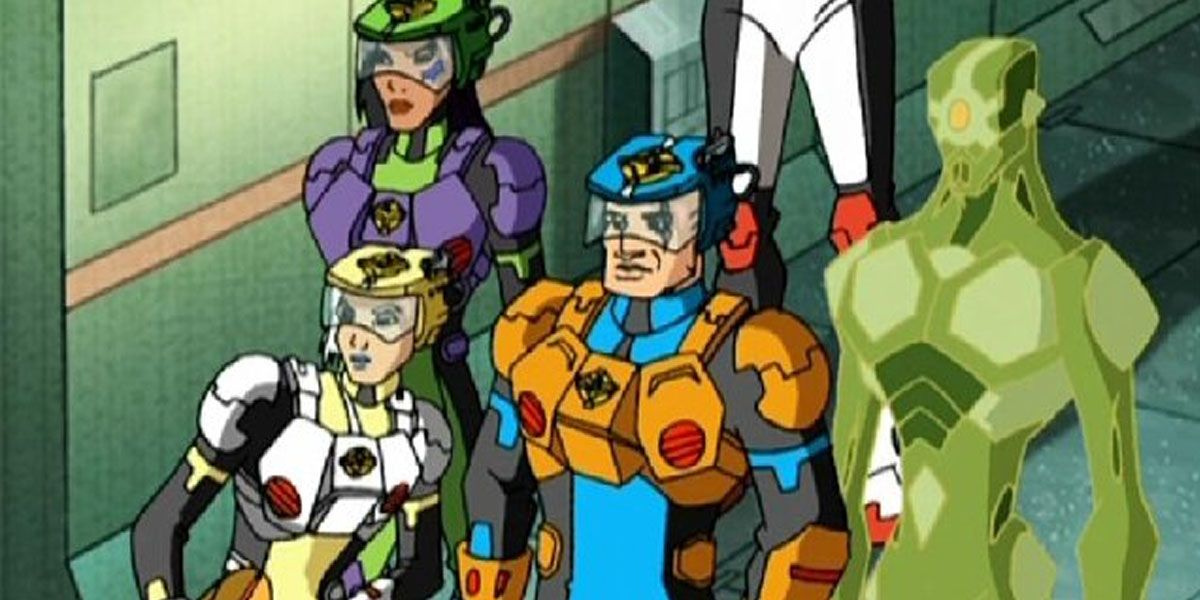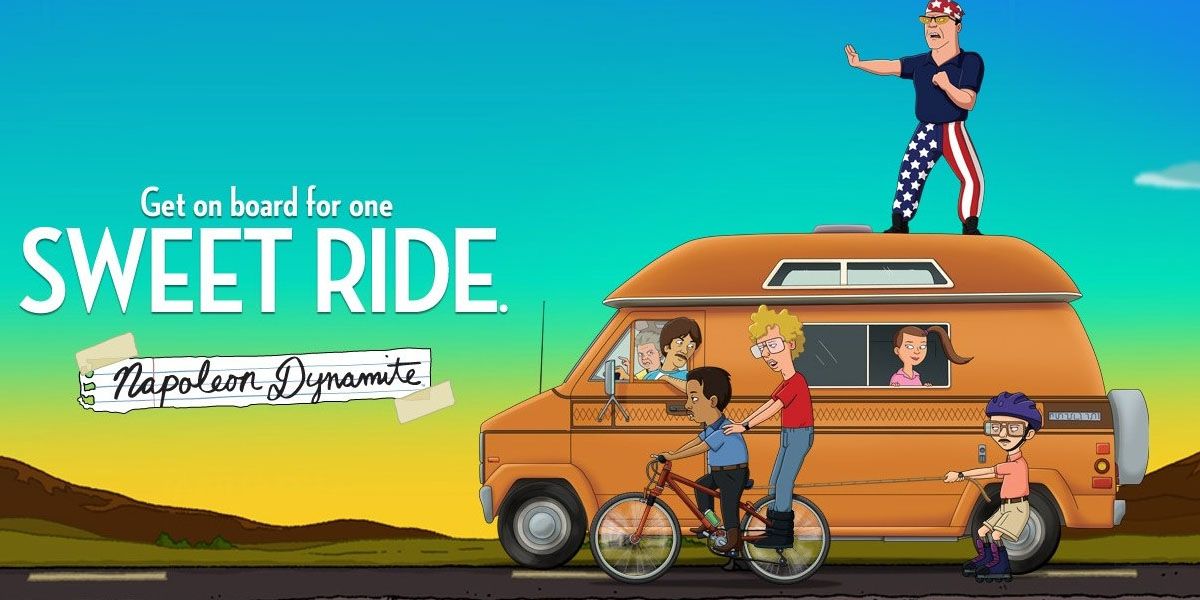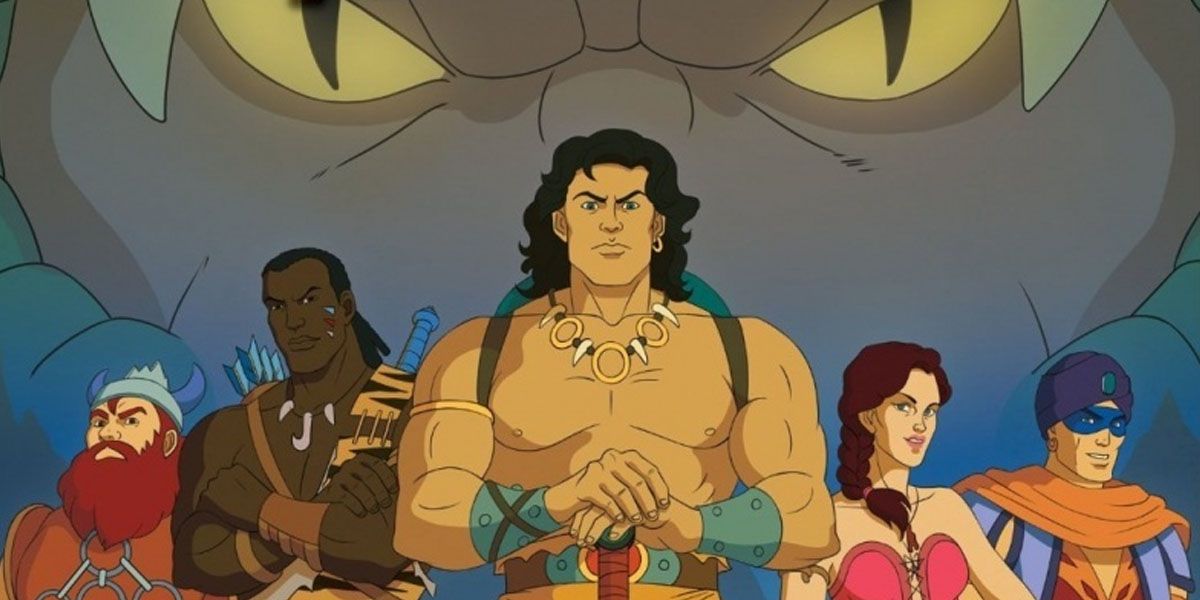Just like Hollywood has some big misses in the movie theaters, they also have some big misses when it comes to adapting popular (and not so popular) movies into animated TV shows. Most of the shows on this list started off as great ideas but somewhere during the process they just come up short. There's usually no one person or thing to blame for a cartoon show not coming out great - it's usually a combination of factors.
There have been more than five dozen animated TV adaptations in the last 40 years, but there since we're only choosing 15 of the worst offenders, that leaves shows such as, Star Wars: Ewoks, Little Shop, and Dumb and Dumber: The Animated Series, resting on the bubble. We've previously covered 10 Must-Watch Cartoons Adapted from Live-Action TV Shows, but there are so many horrible shows as well that we needed a whole other list for them.
Join us as we explore the bottom of the animation barrel with the 15 Worst Cartoons Adapted from Live-Action Movies.
Spaceballs: The Animated Series (2008)
It's no shock that Mel Brooks, one of the funniest men in Hollywood, is arguably the Godfather of Parody Films, creating such comedies classics as Young Frankenstein, Blazing Saddles, and Spaceballs. But whatever skill he had at creating live-action parody movies in the seventies and eighties, he lost completely more than twenty years later while producing Spaceballs: The Animated Series. G4 had planned to debut the show in 2007, but it was pushed back to Summer and eventually Fall of 2008, with no explanation ever given.
Spaceballs: The Animated Series brought back all the characters from the movie (Joan Rivers even returned to voice Dot Matrix), while each episode produced was a parody of different popular culture icon. Jurassic Park, Spider-Man, Harry Potter, The Terminator, even American Idol and Grand Theft Auto weren't immune to writers' comedic jabs - too bad they weren't funny jabs. After thirteen episodes the show was mercifully taken off the air but you can still find some episodes on YouTube.
Dumb & Dumber: The Animated Series (1995)
Dumb & Dumber: The Animated Series joins the When Harry Met Lloyd prequel and the heavily panned Dumb & Dumber To sequel as blights on the original Farrelly Brothers hit comedy. The series failed to live up to the comedy standard set by the film, even with the recognized voice talents of Matt Frewer (Max Headroom), Bill Fagerbakke (Patrick Star), and Tom Kenny (Spongebob Squarepants).
The show featured more of the same awkward comedy laid out in the film, except it isn't nearly as funny - the schtick becomes tedious very quickly. From an animation standpoint, just about every character is drawn from an exaggerated point-of-view, making them quite annoying to look at. Hanna-Barbera sloshed through the production of 13 grueling, hard-to-watch episodes before finally throwing in the towel, as the series was canceled after just one short season.
Friday: The Animated Series (2007)
Ice Cube and Chris Tucker's 1995 film, Friday, didn't set any box office records, but the low budget comedy was so funny and irreverent that it immediately became a cult classic. The laid back, high, day-in-the-life adventures of Craig and Smokey struck a chord with audiences and much of the movie remains relevant today - even inspiring the recent meme "Bye Felicia!"
The same can't be said about the ill-fated Friday: The Animated Series. Unlike other animated adaptations, who attempt to capture an audience while the subject matter is fresh, Friday: The Animated Series waited a full twelve years after the first film was in theaters to make the transition to TV - well beyond its expiration date. While the animation was similar to Disney's The Proud Family, the humor was stale and the series only lasted eight episodes before it was canceled.
Return to the Planet of the Apes (1975)
Planet of the Apes has been a successful franchise for several decades, including a novel by French author Pierre Boulle, 5 original films, 3 "rebooted" films, 1 live-action television show and an animated series titled Return to the Planet of the Apes. By all accounts, the cartoon should have been a huge success, just like all five movies and the live-action TV show that proceeded it - alas, that was not to be the case.
Even the brilliant work of the master cartoon artist Doug Widley (The Saint, Jonny Quest, Jonah Hex) wasn't enough to overcome the obvious low production value of the show. Apes didn't stray very far from its movie roots, falling in line chronologically and keeping the same characters/backstory as the movies and TV show. The biggest complaint about this cartoon was its low-quality animation, obviously due to budgetary constraints rather than Widley. Additionally, while the scripts were well-written, the voice-over work was flat and dull at best.
Star Wars: Ewoks (1985)
Ewoks, the inhabitants of Endor, made their first appearance in the 1983 film Star Wars Episode VI: Return of the Jedi. These primitive, furry and often mischievous creatures immediately became popular with kids across the globe. Because Lucasfilm was second only to Disney in terms of movie brand marketing, it made sense for them to create a Saturday morning cartoon based on these creatures. The series revolved around several characters in the Ewok tribe that were part of film canon - the Warrick and Kintaka families - centering its focus on the adventures of Wicket, the youngest Warrick.
Animation powerhouse Nelvana - a studio that's been churning out hit cartoons since 1971 - produced Ewoks for Lucasfilm. By all accounts the show should have been fantastic, so it's puzzling why it didn't turn out to better. But it may have had something to do with the Ewoks' poor reputation among fans of Star Wars. Even for the mid-eighties (and well below Nelvana's standards) the show's animation was sloppy and the stories weren't as nearly as interesting as the Star Wars films - though they were significantly better than the made-for-TV movie, Ewoks: The Battle for Endor.
The Karate Kid (1989)
Arguably, the eighties produced some of the best teen movies ever made, and many of them still hold up thirty years later. One of those fantastic films was the martial arts drama The Karate Kid. Even nineties-babies know about Daniel LaRusso and his famous crane kick - unfortunately, the same can't be said for the very forgettable animated adaptation of the film series.
DiC Entertainment and Saban Entertainment, two major players in the cartoon world, tried to capitalize on the franchise's three-film popularity in the late eighties but, outside of Daniel LaRusso and his mentor Mr. Miyagi, not much of the movie's canon was kept in the show - and it hurt the quality. Daniel, Mr. Miyagi and their Okinawan friend Taki hopped around the globe searching for a magical, miniature shrine. The show's story became so ridiculous that this was the synopsis for the final episode:
Somewhere in the South, the shrine has come under possession of a shy black boy named Walter, who uses the power of the shrine to shrink actual items for his model collection. In doing so Walter accidentally uses the shrine to shrink the trio. A tiny Daniel and Miyagi must work to give Walter a confidence boost to ask a girl out to a party in the hopes of reverting to their proper sizes.
Little Shop (1991)
In the early-nineties the animated kids' show Little Shop kicked off a slew of horrible cartoons based on mostly decent movies. The 13-episode series revolved around nerdy flower shop worker Seymour Krelborn and his prehistoric plant, a Venus flytrap named Junior. Taking its name from the original 1960 movie, Junior was a helpful 200-year-old plant and nothing like the potty mouth, bloodthirsty, carnivorous alien being which inspired it. In each episode Junior would covertly help Seymour overcome some sort of problem in his life by using its hypnotic vision.
Marvel Productions co-produced the problem-riddled show with Saban, and it had many issues, not the least of which were the stories and dialog - which were lackluster even for the nineties. The show's low quality can be attributed to its source material - the off-Broadway musical Little Shop of Horrors, which was itself an adaptation of the 1986 rock musical movie, which was based on the classic 1960 Roger Corman black and white B-movie. Essentially, they made a copy of a copy of copy of the original, which will always result in loss of fidelity.
Problem Child (1993)
Problem Child was an awful comedy film about a parentless, seven-year-old prankster named Junior, who was so bad he had been returned to the orphanage 30 times. The movie was critical failure but a financial success - so naturally an animated version of the show was immediately produced for the USA Cartoon Express programming lineup. The show followed Junior as he raised hell and created problems for just about everyone in his life, including Principal Igor Peabody (originally an adoption agent), voiced by Gilbert Gottfried, who reprised his character from the film.
From concept to execution, there's very little positive to say about this abysmal show. Somehow producers thought a show about a jerky little kid getting over on everyone he meets would somehow be funny. It didn't work in the movies and it works even less in the cartoon. Junior's biggest rival is his school principal Mr. Peabody. Generally, student/principal rivalries are amusing to watch, but this one is just plain mean and too dark for a kid's show.
Free Willy (1994)
In the summer of 1994, Free Willy became a feel-good, surprise hit film that would eventually spawn three (rather bland) sequels and one short-lived, Big Oil-loathing animated series. Continuing where the movie left off, the series follows fourteen year old Jesse (having been adopted by the Greenwoods) and his orca friend Willy as they embark on various adventures across the ocean - but that's where things get... weird. Thrown into the story as the main villain is an oil baron/cyborg known as The Machine, who is inspired partly by Captain Ahab and the Exxon Valdez oil spill.
Unlike most movie-based cartoons, Free Willy set up the story for the (failed) second film, Free Willy 2: The Adventure Home (minus the oil-loving cyborg, of course). A show about a boy and his whale could have been a fun - and occasionally educational - romp, but producers decided to go with an unapologetically heavy-handed environmental message. School-age children weren't as interested in the message as the adults making the show, which is why is only lasted 13 episodes.
Conan and the Young Warriors (1994)
Since 1932, Robert E. Howard's character, Conan the Barbarian, has been the subject of numerous books, comics, video games, films and even a live-action television series in 1997. But did you know Conan also appeared in two separate cartoon shows as well? The first show, Conan the Adventurer, was a popular cartoon because for 65 episodes it stuck fairly close to the source material, though Conan's savagery was understandably toned way down.
The second show, Conan and the Young Warriors, was a mess for its entire 13-episode run, lacking most of what made the first show appealing to viewers. The writing on the show was mostly uninspired, unable to successfully embody Howard's original sword and sorcery material or introduce interesting original material. The fantasy cartoon Thundaar the Barbarian, also from the early '80s, did a much better job in that regard.
Beethoven (1994)
With a total of eight films under its belt (albeit six were direct-to-video), the Beethoven franchise has been going strong since 1994, when the lovable Saint Bernard who doesn't know his own size first hit theaters. The low budget family comedy was a box office success, so of course an animated version would soon follow. The series followed Beethoven (who could now talk with other animals) and his family of owners, the Newtons, during two 10-minute shorts per episode.
The show's characters were cute and the animation was similar to that of Eek! the Cat, but it just wasn't enough to keep viewers interested long enough to warrant more than one 15-episode season. Even with Ivan Reitman on board as executive producer, the stories and humor were lacking in originality. Each episode showed Beethoven or one of the Newton kids getting into some sort of trouble or misunderstanding - *yawn*. The episodes are currently available to watch on YouTube.
Robocop: Alpha Commando (1998)
In 1987, Robocop set the standard for all movies set in dystopian future societies that are so unlawful the only solution is a cyborg law enforcement officer. While the third sequel, live-action TV series, animated series in the eighties, and 2014 reboot didn't do the franchise any favors, they were nowhere near as embarrassing as the failure that was Robocop: Alpha Commando.
The MGM-produced show aired daily for six months, which explains why its only season amassed forty episodes. The animation in series is on par with other shows during that era - sometimes, even surpassing them - but it suffers greatly from poor writing, which results in horrible continuity errors (even for a cartoon). The show differed greatly from the rest of the franchise - as officer Alex J. Murphy and Sgt. Reed are the only two returning characters, while Anne Lewis was noticeably absent. If you don't believe how awful this show was, every episode is currently available to stream on Hulu.
Alienators: Evolution Continues (2001)
Director Ivan Reitman used the scifi-comedy Evolution as an attempt to recreate the success and fun he had with Ghostbusters in the 1984, except using aliens instead of apparitions - it didn't quite work out. Naturally, where the viewing public sees a failed movie, Hollywood sees the potential for a successful animated series. DiC Entertainment produced 26 episodes of Alienators: Evolution Continues for the Fox Kids animation lineup. Each week, the team found themselves fighting off a new alien species that could rapidly grow from a single-cell organism to a city-crushing monster.
The show kept most of the original characters from the movie - Ira Kane, Alison Reed, and more - but it was the show's "humor" that was really its downfall. An eye-rolling amount of fart jokes were told in each episode thanks to the addition of G.A.S.S.I.E. - an alien "pet" who emits a foul-smelling odor when it detects other aliens. He farts and his name is Gassie! It's hilarious!
Stargate: Infinity (2002)
While Stargate SG-1 was in its sixth season, and before the debut of Stargate: Atlantis, the spin-off series, Stargate: Infinity would attempt to explore the fickle world of children's cartoons. The show was set thirty years in the future, following the exploits of Gus Bonner and his crew as they jumped across the universe in attempt to clear their names after being accused of opening the earth's Stargate to an invading alien race.
If you're thinking, "None of this sounds familiar.", that would be because the show had nothing to do with the official Stargate universe. From the outset, the series received very poor ratings and harsh critical reception, which led to it's cancellation after one 26-episode season. Fans of the franchise were mainly turned off to the show because it didn't follow Stargate canon - a fact that Stargate SG-1 co-creator Brad Wright had emphasized several times.
Napoleon Dynamite (2012)
The husband and wife writing team of Jared and Jerusha Hess struck comedy gold in 2004 with the low-budget art-house movie Napoleon Dynamite. The story about an awkward 16-year old teenage boy from Idaho was a runaway hit and remains popular with people of all ages, even today. The Napoleon Dynamite TV series brought back just about every character from the movie, including the people who played them to provide the voices. The story for the show was set sometime after Pedro became class president but before Kip and Lafawnduh are married.
Fox originally ordered a 6 episode trial run for Napoleon Dynamite but never gave the show a fair shake when placing it into its Animation Domination lineup. The show was to be a midseason replacement but often got bumped for sporting events and other special broadcasts. The series debuted with a strong viewership but trailed off significantly as the weeks went by. Unfortunately, the TV show just couldn't recreate the magic of bo-staffs and ligers from the film and the show was never renewed.
Conclusion
Even though we didn't rank these shows in order of their horribleness, it's clear that some are bigger offenders than others. However, these shows weren't the only films to have received the animation treatment: Ace Ventura: Pet Detective, The Toxic Avenger, The Mummy, King Kong, and Godzilla and more, all found their way in the world of cartoons.
Are there any bad cartoons adapted from movies you think should be on this list that we left off? Tell us about them in the comments. And when you're done with all this negativity, be sure to check out the 10 Best Cartoons Adapted from Movies as well.

